Mesopotamian culture is rich with captivating myths and stories that shed light on the beliefs and values of ancient civilizations. Among these myths, the Enuma Elish stands out as a cornerstone of Mesopotamian mythology. This ancient creation myth explores the origins of the universe, the power dynamics between gods and goddesses, and the role of humanity in the cosmic order. In this article, we will delve into the historical and cultural context of Mesopotamia, examine the structure and themes of the Enuma Elish, unravel the symbolism and meaning embedded within the story, and explore its lasting influence on religious beliefs and future mythologies. Prepare to embark on a journey that unravels the mysteries of the Enuma Elish and unlocks the wisdom of a civilization long gone.
Contents
- The Historical and Cultural Context
- Overview of Enuma Elish
- The Creation Story
- Symbolism and Meaning
- Influence and Legacy
- Conclusion
-
Frequently Asked Questions
- 1. What does the term “Enuma Elish” mean?
- 2. How old is the Enuma Elish?
- 3. Who wrote the Enuma Elish?
- 4. What themes does the Enuma Elish explore?
- 5. How does the Enuma Elish compare to other creation myths?
- 6. Who were Tiamat and Marduk in the Enuma Elish?
- 7. How does the Enuma Elish depict the creation of the universe?
- 8. What role does humanity play in the Enuma Elish?
- 9. How did the Enuma Elish impact religious beliefs in Mesopotamian culture?
- 10. What influence did the Enuma Elish have on future mythologies?
- References
-
Frequently Asked Questions
- What is the Enuma Elish?
- When was the Enuma Elish written?
- Who wrote the Enuma Elish?
- What is the significance of the Enuma Elish?
- What themes are present in the Enuma Elish?
- Who are the main gods and goddesses in the Enuma Elish?
- What is the structure of the Enuma Elish?
- What is the role of humanity in the Enuma Elish?
- How has the Enuma Elish influenced religious beliefs?
- What impact has the Enuma Elish had on future mythologies?
- References
- Read More
The Historical and Cultural Context
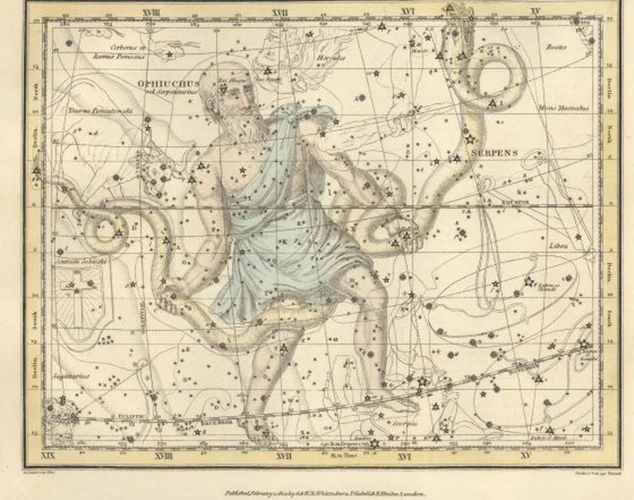
The Mesopotamian Civilization:
Mesopotamia, often referred to as the “cradle of civilization,” was a region located in modern-day Iraq and parts of Syria, Turkey, and Iran. It flourished between the 4th and 3rd millennia BCE, making it one of the earliest known civilizations in the world. Mesopotamia was home to various city-states, such as Sumer, Akkad, and Babylon, each with its own distinct cultural and religious practices. The city-states were characterized by advancements in agriculture, architecture, law, and writing systems, including the invention of cuneiform script. Mesopotamia was a highly stratified society, with kings and priests occupying the highest social positions, followed by merchants, artisans, and common laborers. Religion played a central role in the lives of the Mesopotamians, as they believed that the gods and goddesses controlled all aspects of their existence.
The Importance of Mythology:
Mythology formed an integral part of Mesopotamian culture, providing explanations for the creation of the world, the origins of humanity, and the forces at work in the natural and supernatural realms. These myths served as a way to preserve and transmit cultural knowledge from one generation to the next. They also provided moral and spiritual guidance, offering a framework for understanding the human condition and the relationship between mortals and the divine. Mythological stories were often intertwined with religious rituals, festivals, and daily life, reinforcing the connection between the spiritual and earthly realms. Understanding the historical and cultural context of Mesopotamia is crucial for comprehending the significance of the Enuma Elish, as it emerged from this vibrant civilization and embodies its beliefs, values, and worldview.
The Mesopotamian Civilization
The Mesopotamian Civilization:
– Location: Mesopotamia was situated in the fertile region between the Tigris and Euphrates rivers, which provided an ideal environment for agriculture and settlement.
– City-States: Mesopotamia was a region divided into several independent city-states, each with its own government and ruler. These city-states, such as Sumer, Akkad, and Babylon, developed their own unique cultures and systems of governance.
– Advancements: The Mesopotamians made significant advancements in various fields. They pioneered the development of writing systems, with the cuneiform script being one of the earliest known forms of writing. They also built impressive architectural structures such as ziggurats and palaces. In agriculture, they invented irrigation systems to harness the power of the rivers and increase crop yields.
– Social Hierarchy: Mesopotamian society was hierarchical, with kings and priests occupying the highest positions. The kings were believed to have divine authority, and the priests served as intermediaries between the gods and the people. Merchants, artisans, and common laborers made up the middle and lower classes.
– Religion and Mythology: Religion played a central role in Mesopotamian culture. They worshiped numerous gods and goddesses, each associated with different aspects of nature and human life. The Enuma Elish and other myths served as a way to explain the creation of the world, the origins of humanity, and the divine forces at play.
– Contributions: Mesopotamia’s contributions to human civilization extend beyond mythology. They developed an intricate legal system, with the Code of Hammurabi being an important legal code. They also made advancements in mathematics, astronomy, and literature.
Understanding the Mesopotamian civilization is crucial for comprehending the broader context in which the Enuma Elish emerged. It sheds light on the social, cultural, and intellectual milieu that shaped the ancient world and influenced subsequent civilizations. To explore how this ancient civilization influenced astrology and health, click [here](/astrology-health-connection-zodiac-wellbeing/).
The Importance of Mythology
The Importance of Mythology:
Mythology played a vital role in Mesopotamian society, shaping the beliefs, behaviors, and worldview of its people. The Mesopotamians believed that myths held the key to understanding the mysteries of the universe and the nature of their existence. By studying and interpreting these myths, individuals could gain insight into their place in the cosmic order and their relationship with the divine. Mythology also provided a framework for explaining natural phenomena, such as the changing of seasons, the rising and setting of the sun, and the cycles of life and death. It offered comfort and solace in times of uncertainty and served as a source of inspiration for artistic expression, including literature, poetry, and religious rituals. Mythological tales were shared orally and later recorded in written form, ensuring their preservation and transmission across generations. These stories were not merely seen as fictional narratives but as accounts of real events that shaped the world and had ongoing significance for human life. The Enuma Elish, as one of the most prominent creation myths of Mesopotamia, exemplifies the vital role that mythology played in the cultural and spiritual fabric of this ancient civilization. The link between mythology and religious belief in Mesopotamia was strong, with the gods and goddesses portrayed in these myths being actively worshipped and revered by the people.(source: astrology and health connection)
Overview of Enuma Elish
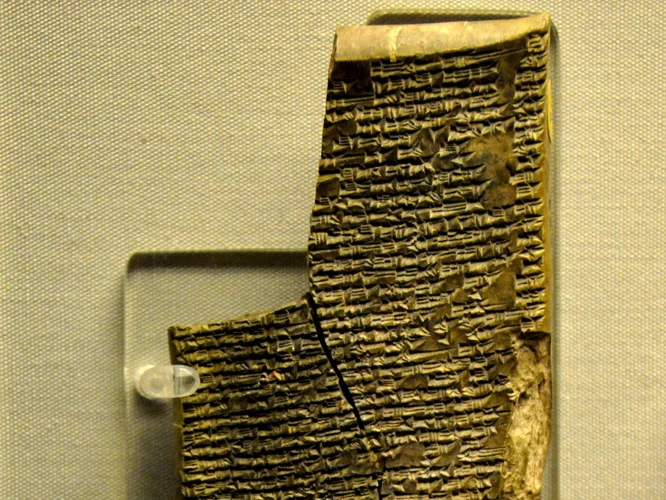
Translation and Interpretations:
The Enuma Elish, also known as the “Epic of Creation,” is one of the most well-known and important texts from ancient Mesopotamia. The original cuneiform tablets containing the myth were discovered in the library of the Assyrian king Ashurbanipal in Nineveh during the mid-19th century. The myth was written in Akkadian, the dominant language of the time, and it recounts the divine struggle for supremacy and the establishment of cosmic order. The translation of the Enuma Elish has posed challenges for scholars due to the complexity of the Akkadian language and the fragmented nature of some tablet fragments. However, through meticulous analysis and comparison with other texts, researchers have been able to reconstruct the story and provide interpretations.
Structure and Themes:
The Enuma Elish is divided into seven tablets, each containing a distinct part of the creation story. The tablets describe the primordial chaos and the emergence of the gods and goddesses, particularly the Babylonian sky god Marduk. One of the central themes of the myth is the battle between Marduk and the dragon-like goddess Tiamat, who represents the forces of chaos and disorder. This epic clash symbolizes the struggle between order and chaos, with Marduk eventually emerging victorious and establishing the divine hierarchy. The myth also explores the creation of the cosmos, the establishment of the seasons, and the birth of humanity.
The Enuma Elish provides insights into the Mesopotamian worldview, highlighting the importance of divine order, the power dynamics among the gods, and the role of humanity in the cosmic tapestry. By analyzing the structure and themes of the Enuma Elish, scholars gain a deeper understanding of Mesopotamian beliefs about creation and the ongoing struggle to maintain order in the face of chaos and destruction. Understanding the translation and interpretations of this ancient text helps to unravel the layers of meaning embedded within the Enuma Elish and its significance in the cultural and religious context of ancient Mesopotamia.
Translation and Interpretations
Translation and Interpretations:
The Enuma Elish, originally written in Akkadian, has gone through various translations and interpretations over the centuries. Scholars have dedicated their efforts to understanding and deciphering the ancient text, providing invaluable insights into Mesopotamian culture and mythology. One of the earliest translations was made by George Smith in the 19th century, who pieced together fragments of clay tablets to reconstruct the epic tale. Since then, numerous scholars have contributed to our understanding of the Enuma Elish, each offering their unique interpretations and perspectives. Some focus on the historical and political context, seeing the story as a reflection of Mesopotamian royal ideology and religious practices. Others delve into the cosmological and symbolic aspects of the myth, exploring the themes of creation, chaos, and order. These interpretations have shed light on the complex layers of meaning within the Enuma Elish, allowing us to appreciate its significance as a narrative and a cultural artifact.
Structure and Themes
Structure and Themes:
The Enuma Elish is composed of seven tablets, each containing a different part of the creation myth. The tablets were discovered in various ancient Mesopotamian sites, such as Ashur, Nineveh, and Nippur, and were written in Akkadian cuneiform script. Each tablet follows a narrative structure, presenting a distinct episode in the cosmic drama. The overall theme of the Enuma Elish revolves around the rise of the god Marduk to supreme power through his defeat of the primordial goddess Tiamat. Tiamat represents chaos and the forces of disorder, while Marduk symbolizes order and civilization. The story begins with the existence of Apsu, the freshwaters, and Tiamat, the saltwaters, who give birth to the younger gods. Conflict arises when the younger gods become too noisy, prompting Apsu to plan their destruction. However, Ea, the god of wisdom, thwarts Apsu’s plan and kills him. This sets the stage for Tiamat’s rage and her decision to wage war against the younger gods. The tablets chronicle the battle between Tiamat and Marduk, where Marduk emerges victorious and establishes his supremacy. The themes of conflict, power, and the struggle between chaos and order are central to the Enuma Elish, reflecting the Mesopotamian worldview and the challenges they faced in maintaining social order and cosmic harmony.
The Creation Story
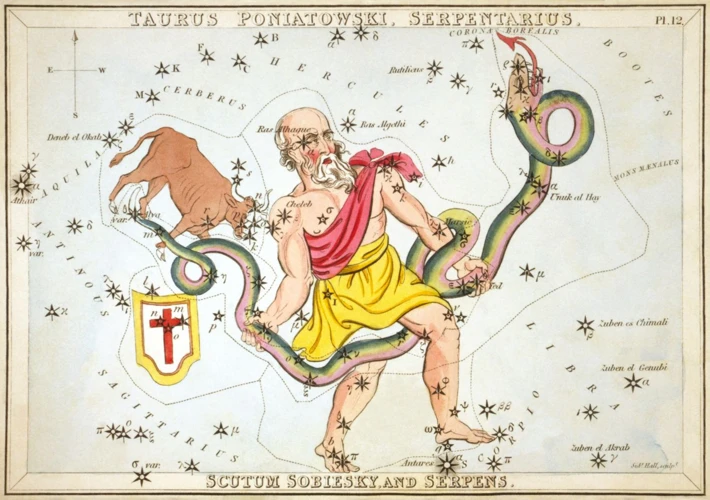
The Creation Story:
The Enuma Elish, also known as the “Babylonian Genesis,” is an epic poem that recounts the creation of the universe according to Mesopotamian mythology. The story begins by introducing the gods and goddesses who emerge from the primordial chaos. Among them is the powerful and destructive goddess Tiamat, representing the saltwater, and her consort Apsu, representing the freshwater. The younger generation of gods, led by Marduk, the patron deity of Babylon, grows restless and seeks to overthrow Tiamat and Apsu. This leads to a fierce battle between the gods, symbolizing the cosmic struggle between order and chaos.
In a climactic showdown, Marduk emerges victorious against Tiamat and becomes the supreme ruler of the gods. He creates the earth and the heavens by splitting Tiamat’s body into two halves, forming the sky and the earth respectively. Marduk then appoints various gods to take up roles in the cosmic order, establishing a hierarchical structure in which he reigns as the supreme deity. The creation of humans is also described in the Enuma Elish, with the belief that they were crafted from the blood of a rebellious god to serve as slaves for the gods.
The Enuma Elish is a complex and multi-layered creation story that reflects the Mesopotamian worldview and their understanding of the universe. It explores fundamental themes such as the struggle between chaos and order, the exercise of power, and the role of humanity in the grand scheme of creation. This powerful and captivating narrative provides insights into the Mesopotamian belief system and their perception of the divine. It is an enduring testament to the cultural richness and imagination of this ancient civilization.
Introduction of the Gods and Goddesses
In the Enuma Elish, the gods and goddesses are introduced as key characters in the creation myth. They represent various aspects of nature, celestial bodies, and human emotions. The chief god, Marduk, takes center stage as the protagonist of the story. As the patron deity of the city of Babylon, Marduk symbolizes kingship, power, and authority. He is portrayed as a fierce warrior, embodying the strength and valor needed to vanquish the forces of chaos and establish order in the universe. Other prominent deities include Tiamat, the primordial goddess of saltwater and chaos, and Ea, the god of freshwater and wisdom. Tiamat’s role as the antagonist highlights the struggle between order and chaos, while Ea serves as the voice of reason and counsel to the other gods. Additionally, other gods and goddesses are introduced, each possessing distinct powers and responsibilities. Their interactions and alliances shape the narrative of the creation myth, reflecting the intricate relationships and power dynamics within the Mesopotamian pantheon. For instance, the god Enlil represents wind and storms, while Inanna is associated with fertility and love. These deities not only serve as divine beings but also offer insights into the complexities of human existence and the forces that shape the world around us. By examining their roles and attributes, we can gain a deeper understanding of the Enuma Elish and its portrayal of the divine realm and its interaction with the mortal world.
The Battle between Tiamat and Marduk
The Battle between Tiamat and Marduk is a pivotal event in the Enuma Elish, symbolizing the cosmic struggle between chaos and order. Tiamat, the primordial goddess of saltwater and Chaos, grows angry and seeks revenge for the slaying of her consort, Apsu. She creates an army of monstrous creatures, led by her new consort, Kingu, with the intention of overthrowing the younger gods. The gods, alarmed by Tiamat’s actions, are unable to defeat her, and turn to Marduk, the god of Babylon and their supreme leader, for help. Marduk boldly steps forward, offering to be their champion and agreeing to face Tiamat in battle.
The encounter between Tiamat and Marduk is an epic clash, with Tiamat represented as a frightening and awe-inspiring force. She takes the form of a gigantic sea serpent, roaring and spewing venomous fire. Marduk, on the other hand, is depicted as a valiant hero, clad in divine armor and wielding powerful weapons. The battle is fierce, and Marduk ultimately triumphs over Tiamat by using his winds to seize her, rendering her defenseless. He then shoots an arrow that pierces her heart, defeating her and scattering her body, creating the heavens and the earth.
This battle is not only a physical confrontation but also symbolizes the triumph of order over chaos, civilization over the primordial forces. It highlights the power and authority of Marduk, who becomes the supreme ruler of the universe and establishes Babylon as the center of the cosmos. The victory of Marduk brings stability, establishes divine order, and sets the stage for the creation of humanity in Mesopotamian mythology. The Battle between Tiamat and Marduk demonstrates the importance of divine intervention and the ability of the gods to shape and control the universe, reaffirming the belief in the hierarchical order of the Mesopotamian cosmos.
Cosmic Creation and Tiamat’s Defeat
Cosmic Creation and Tiamat’s Defeat:
In the Enuma Elish, the cosmic creation and Tiamat’s defeat mark pivotal moments in the Mesopotamian creation myth. After Tiamat, the primordial goddess of chaos, unleashes her fury upon the gods and threatens to destroy the universe, the younger generation of gods led by Marduk emerges to confront her. A fierce battle ensues, with Tiamat summoning monstrous creatures to aid her cause. Marduk, armed with divine weapons bestowed upon him by the other gods, takes on the role of the champion and successfully vanquishes Tiamat, restoring order and ensuring the survival of the cosmos.
This dramatic clash between Tiamat and Marduk is symbolic of the eternal struggle between chaos and order, darkness and light. Tiamat represents the forces of chaos and destruction, while Marduk embodies the principle of divine kingship and organization. The defeat of Tiamat by Marduk signifies the triumph of order and the establishment of a stable and structured universe.
The Enuma Elish’s portrayal of cosmic creation and Tiamat’s defeat holds profound significance in Mesopotamian culture. It reflects the Mesopotamians’ desire for stability, security, and a sense of purpose in a world that often felt unpredictable and tumultuous. By emphasizing Marduk’s victory over Tiamat, the myth conveys the belief in the triumph of order and the power of human agency. It reinforces the notion that through organized society and the rule of a wise and just ruler, chaos can be subdued and the world can thrive.
This cosmic battle and the subsequent establishment of order by Marduk also served as a justification for the divine authority of kings in Mesopotamia. The Enuma Elish portrays Marduk as not only a powerful warrior but also as the creator of humanity, further elevating the position of kings as the intermediaries between the divine and mortal realms. This divine justification for kingship had a profound impact on the political and social structures of Mesopotamian civilization, shaping their governance and societal roles.
The cosmic creation and Tiamat’s defeat in the Enuma Elish embody the Mesopotamians’ profound understanding of the eternal struggle between order and chaos and their quest for stability and purpose in the world. This mythic narrative continues to resonate and inspire awe, showcasing the enduring power of storytelling and the rich cultural legacy of the Mesopotamian civilization.
Symbolism and Meaning
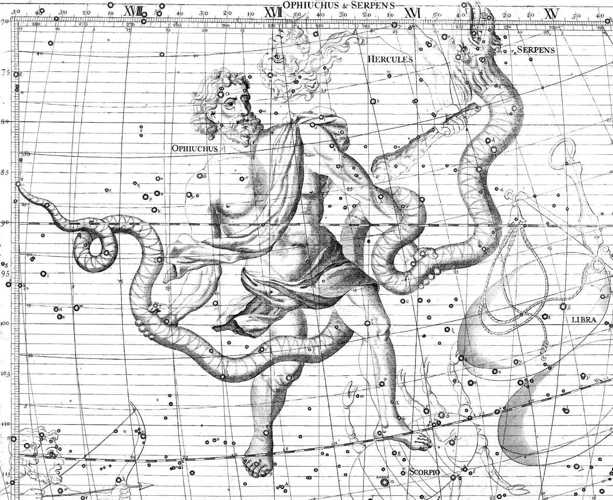
Symbolism and Meaning:
The Enuma Elish is a rich tapestry of symbolism and meaning, offering insights into the Mesopotamian worldview and the human understanding of creation. One of the central themes of the myth is the concept of creation as a divine struggle between opposing forces. The battle between Tiamat, the primordial goddess of chaos and creation, and Marduk, the patron deity of Babylon, represents the eternal conflict between order and chaos. This struggle reflects the Mesopotamian belief in the delicate balance that must be maintained in the natural world for stability and harmony to prevail. The Enuma Elish also explores power dynamics and the hierarchical structure of the divine realm. Marduk’s victorious ascent to the supreme position among the gods signifies the establishment of a divine order, where specific gods are assigned specific roles and responsibilities. This hierarchical system mirrors the societal structure of Mesopotamia, reinforcing the idea that everything in the universe has a designated place and purpose.
Humanity’s role in creation is another important aspect of the myth. According to the Enuma Elish, humans were created from the blood of the defeated god, Kingu. This highlights the belief that humans are an integral part of the divine order, and their existence serves a specific purpose within the cosmic framework. Mesopotamians viewed humanity as both servants and co-creators with the gods, responsible for maintaining the divine balance on Earth. The Enuma Elish emphasizes the importance of fulfilling one’s duties and obligations in the larger cosmic scheme.
The symbolism within the Enuma Elish speaks to the profound connection between the natural and supernatural realms in Mesopotamian culture. It sheds light on the deep reverence and awe that the ancient Mesopotamians had for the forces that shaped their existence. By exploring the layers of symbolism and meaning in the myth, we gain a deeper understanding of the complex beliefs and worldview of this ancient civilization.
Creation as a Divine Struggle
Creation as a Divine Struggle:
One of the key themes in the Enuma Elish is the concept of creation as a divine struggle. The myth depicts a cosmic battle between the primordial goddess Tiamat and the young god Marduk. Tiamat, representing chaos and the salty waters of the sea, seeks to reclaim her power by overthrowing the younger generation of gods. Marduk, on the other hand, represents order and civilization and takes up the challenge to confront Tiamat. This epic clash symbolizes the eternal conflict between chaos and order, highlighting the necessity of a powerful deity to establish and maintain cosmic harmony.
The Enuma Elish presents a vivid portrayal of the struggle between opposing forces as a metaphor for the process of creation itself. Through the battle between Tiamat and Marduk, the myth suggests that creation requires immense effort, determination, and even violence. It reflects the belief that order and stability can only emerge through a triumph over chaos and the establishment of a cosmic framework. This struggle not only gives birth to the physical world but also sets the stage for the hierarchical structure of the divine realm, with Marduk assuming the role of the supreme god.
The symbolism of creation as a divine struggle in the Enuma Elish resonates with the broader human experience of overcoming challenges and obstacles to bring order and purpose to one’s life. It serves as a reminder that the road to creation and success is often fraught with obstacles and requires perseverance, strength, and resolution. The divine struggle presented in this Mesopotamian creation myth offers valuable insights into the human quest for meaning and the inherent dynamics of the cosmic order.
Note: For more information on exploring the dynamics of oppositions in astrology, you can visit exploring-oppositions-astrology.
Power Dynamics and Divine Hierarchy
Power Dynamics and Divine Hierarchy:
The Enuma Elish provides insights into the power dynamics and divine hierarchy within the Mesopotamian pantheon. At the forefront of this hierarchy is the god Marduk, who emerges as the supreme ruler through his victorious battle against the primordial goddess Tiamat. Marduk’s ascent to power reflects the Mesopotamian belief in the divine right of kings, where the ruler is seen as the mediator between the gods and humanity, channeling divine authority and maintaining cosmic order. The Enuma Elish emphasizes Marduk’s role as the protector and benefactor of humanity, solidifying his position as the supreme deity. The divine hierarchy within the myth illustrates the complex interplay between gods and goddesses, each holding specific roles and responsibilities. For example, Marduk’s parents, Ea and Damkina, represent wisdom and fertility, respectively. Nergal, the god of war and plague, reflects the Mesopotamian understanding of the destructive forces that must be controlled to maintain balance. The myth portrays a structured pantheon, with Marduk at its helm, showcasing the Mesopotamians’ reverence for hierarchy and order. Understanding this divine hierarchy provides a deeper appreciation for the Mesopotamian worldview and their perception of the relationship between gods, humans, and the natural world.
Humanity’s Role in Creation
Humanity’s Role in Creation:
In the Enuma Elish, humanity plays a vital role in the cosmic order. After the defeat of Tiamat and her forces by the god Marduk, the world is created from the divided body of the defeated goddess. Marduk forms human beings from the blood of the slain god Kingu, infusing them with divine qualities. This act of creation establishes humans as both the beneficiaries and the caretakers of the newly formed world. They are tasked with the responsibility of upholding cosmic order, maintaining the gods’ favor, and participating in religious rituals to ensure the continued harmony between the earthly and divine realms. This belief in humanity’s active involvement in the preservation and prosperity of the created world reflects the Mesopotamian understanding of their place within the larger cosmic hierarchy. It highlights the significance of human agency and underscores the interconnectedness between gods and mortals in shaping the destiny of the universe. Through this mythological framework, the Enuma Elish reinforces the importance of human participation, devotion, and responsibility in maintaining the balance and order of the cosmos.
For more insights into celestial influences on relationships, you may explore the significance of Venus-Mars aspects in relationship compatibility.
Influence and Legacy
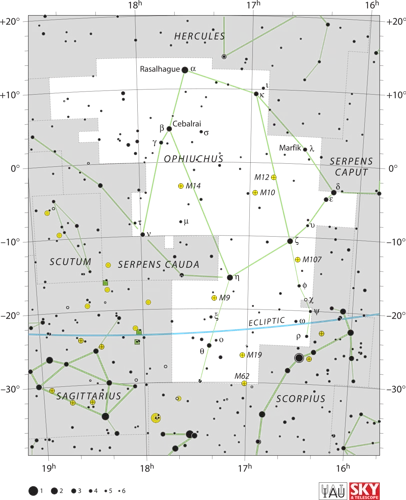
Influence and Legacy:
Implications on Religious Beliefs:
The Enuma Elish had a profound impact on religious beliefs in ancient Mesopotamia. It reinforced the notion of a divine hierarchy, with Marduk established as the supreme god and ruler of the universe. This concept of a single supreme deity governing the heavens and the earth influenced subsequent Mesopotamian religions, such as the worship of Babylonian and Assyrian gods. The idea of divine beings engaging in cosmic battles also became a recurring theme in Mesopotamian mythology, highlighting the ongoing struggle between order and chaos, and the need for gods and humans to maintain cosmic balance.
Cultural Impact and Influence on Future Mythologies:
The Enuma Elish’s influence extends beyond the borders of Mesopotamia and has left an indelible mark on future mythologies and religious traditions. Its themes and motifs can be traced in the creation stories of other ancient cultures, such as the Babylonian creation myth’s influence on the Hebrew Bible’s Book of Genesis. This underscores the cross-cultural exchange and diffusion of ideas that occurred throughout ancient civilizations. The Enuma Elish’s legacy is also evident in later mythological and religious texts, such as the epic of Gilgamesh, which draws upon similar themes of divine struggle, creation narratives, and the search for immortality.
The Enuma Elish’s enduring influence on religious beliefs and its cultural impact on subsequent mythologies attest to its significance as a foundational text of ancient Mesopotamian civilization. Its exploration of creation, power dynamics, and humanity’s role in the cosmic order continues to resonate and inspire curiosity about the origins of the universe and our place within it. As we delve into the depths of ancient mythologies, we uncover timeless stories that speak to the very essence of human existence.
Implications on Religious Beliefs
Implications on Religious Beliefs:
The Enuma Elish holds significant implications for the religious beliefs of the ancient Mesopotamians. This creation myth establishes the divine hierarchy and the power dynamics between the gods and goddesses. It presents Marduk as the central deity who gains supremacy over the other gods, reflecting the societal shift towards a more centralized authority. The story also reinforces the concept of divine intervention in human affairs, as the gods shape and influence the destinies of mortals. The Enuma Elish reinforced the belief in polytheism, with various gods and goddesses responsible for different aspects of the natural and supernatural realms. Additionally, it emphasized the importance of rituals and offerings to appease the deities and ensure a harmonious relationship between humans and gods. The influence of the Enuma Elish on religious beliefs can be seen in the continued worship of deities such as Marduk and Tiamat in later Mesopotamian cultures, as well as the development of syncretic religious practices that combined elements of different mythologies and traditions. This enduring impact on religious beliefs illustrates the significance of the Enuma Elish in shaping the spiritual lives of the Mesopotamian people.
[Link: Venus-Mars Aspects Relationship Compatibility](/venus-mars-aspects-relationship-compatibility/)
Cultural Impact and Influence on Future Mythologies
Cultural Impact and Influence on Future Mythologies:
The Enuma Elish had a profound and lasting impact on not only Mesopotamian culture but also on future mythologies and religious beliefs. Its influence can be seen in various ways:
1. Literary Influence: The Enuma Elish set a precedent for epic storytelling and poetic composition. Its structure, use of divine characters, and dramatic conflict between gods and goddesses inspired later civilizations to create their own epic narratives. One notable example is the Babylonian Epic of Gilgamesh, which shares similar themes of divine-human interaction and the quest for immortality.
2. Religious Influence: The Enuma Elish shaped the religious beliefs and practices of the Mesopotamians. It reinforced the idea of a divine hierarchy, with Marduk at the top as the supreme god. This concept of a supreme deity ruling over a pantheon of gods and goddesses influenced not only subsequent Mesopotamian religions but also future civilizations, such as the Assyrians and Babylonians.
3. Cultural Exchange: Mesopotamia was a hub of trade and cultural exchange, leading to the spread of its mythology and religious concepts to neighboring regions. As merchants and travelers interacted with Mesopotamian society, they carried these stories and ideas back to their own communities. This cultural diffusion resulted in the integration of Mesopotamian myths into the mythologies of other ancient civilizations.
4. Influence on Judeo-Christian Traditions: The Enuma Elish shares striking similarities with the creation story described in the book of Genesis in the Bible. These similarities, such as the concept of divine creation, the separation of the heavens and earth, and the establishment of order, suggest that the Enuma Elish may have influenced early Hebrew beliefs and served as a precursor to the biblical creation story.
The Enuma Elish’s cultural impact and influence on future mythologies cannot be overstated. Its literary style, religious concepts, and diffusion to other civilizations all contributed to shaping the beliefs and narratives of ancient societies. Its echoes can still be heard in the mythologies and religious traditions that emerged in later centuries.
Conclusion
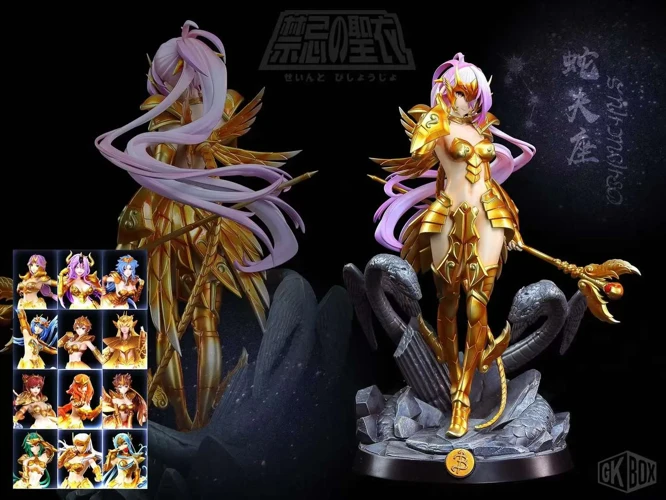
In conclusion, the Enuma Elish provides a fascinating glimpse into the historical and cultural context of ancient Mesopotamia. This creation myth not only reveals the Mesopotamians’ beliefs about the origin of the universe and the struggles between gods and goddesses but also sheds light on their social, political, and religious structures. The Enuma Elish showcases the Mesopotamians’ reverence for divine power and the hierarchical structure of their society. Moreover, it emphasizes the vital role of humanity in the grand scheme of creation, highlighting the responsibility for maintaining order and fulfilling certain obligations to the gods. The influence of the Enuma Elish extends beyond Mesopotamia, as elements of this myth can be traced in subsequent mythologies and religious beliefs of cultures across the world. Overall, the Enuma Elish not only provides insight into the ancient Mesopotamian culture but also demonstrates the timeless power and universality of myth in shaping human civilizations and their understanding of the divine.
Frequently Asked Questions

1. What does the term “Enuma Elish” mean?
The term “Enuma Elish” translates to “When on High” or “In the beginning” in Akkadian, the ancient language of Mesopotamia.
2. How old is the Enuma Elish?
The Enuma Elish is believed to have been composed around the 12th century BCE, but the story itself may have originated even earlier during the Babylonian period.
3. Who wrote the Enuma Elish?
The authorship of the Enuma Elish is unknown, as it was likely passed down through oral tradition before being written down. It is attributed to Marduk, the patron deity of Babylon.
4. What themes does the Enuma Elish explore?
The Enuma Elish explores themes of creation, divine power, cosmic order, and the struggle between gods and goddesses for supremacy.
5. How does the Enuma Elish compare to other creation myths?
The Enuma Elish shares similarities with creation myths from other ancient civilizations, such as the Babylonian Epic of Gilgamesh and the creation stories in Egyptian and Greek mythology. However, each myth has its unique cultural and religious elements.
6. Who were Tiamat and Marduk in the Enuma Elish?
Tiamat was the primordial goddess of saltwater and chaos, while Marduk was the chief god of Babylon, associated with justice, strength, and the sun.
7. How does the Enuma Elish depict the creation of the universe?
In the Enuma Elish, the universe is created from the merging of Tiamat’s chaos and the order brought by Marduk. Marduk then establishes the heavens, Earth, and all living beings.
8. What role does humanity play in the Enuma Elish?
In the Enuma Elish, humanity is created to serve the gods, as laborers and worshippers. Humans are seen as subordinate to the gods and play a vital role in maintaining the cosmic order.
9. How did the Enuma Elish impact religious beliefs in Mesopotamian culture?
The Enuma Elish reinforced the belief in a pantheon of gods and their hierarchy, as well as the idea that the gods held ultimate power over human destiny. It also highlighted the importance of rituals and offerings to appease and gain favor from the gods.
10. What influence did the Enuma Elish have on future mythologies?
The Enuma Elish served as a significant source for later mythologies, including the creation stories in the Hebrew Bible. Its themes of divine struggle and order versus chaos resonated throughout history, shaping the narratives of many cultures and religions.
References
Frequently Asked Questions

What is the Enuma Elish?
The Enuma Elish is a Babylonian creation myth that explains the origins of the world and the formation of the universe.
When was the Enuma Elish written?
The Enuma Elish was written around the 12th century BCE during the reign of King Hammurabi of Babylon.
Who wrote the Enuma Elish?
The authorship of the Enuma Elish is still uncertain, but it is believed to have been written by multiple authors over a period of time.
What is the significance of the Enuma Elish?
The Enuma Elish provides insights into the religious beliefs and cultural values of ancient Mesopotamia, shedding light on their understanding of creation and the divine.
What themes are present in the Enuma Elish?
The Enuma Elish explores themes of power, conflict, divine hierarchy, and the role of humans in the larger cosmic order.
Who are the main gods and goddesses in the Enuma Elish?
The Enuma Elish features a diverse pantheon of gods and goddesses, with major figures including Tiamat, Marduk, and Ea.
What is the structure of the Enuma Elish?
The Enuma Elish is composed of seven tablets, each containing different sections of the creation story and the battle between Tiamat and Marduk.
What is the role of humanity in the Enuma Elish?
Humanity is created by the gods to serve as their servants and provide them with offerings and worship.
How has the Enuma Elish influenced religious beliefs?
The Enuma Elish has influenced subsequent religious beliefs by introducing concepts of divine power, creation, and the relationship between gods and humans.
What impact has the Enuma Elish had on future mythologies?
The Enuma Elish has served as a source of inspiration for later mythologies, influencing the creation stories and cosmologies of various cultures around the world.
References
- The Enuma Elish: The Babylonian Creation Myth
- Enuma elish | Summary, Characters, Creation Story, & Facts







